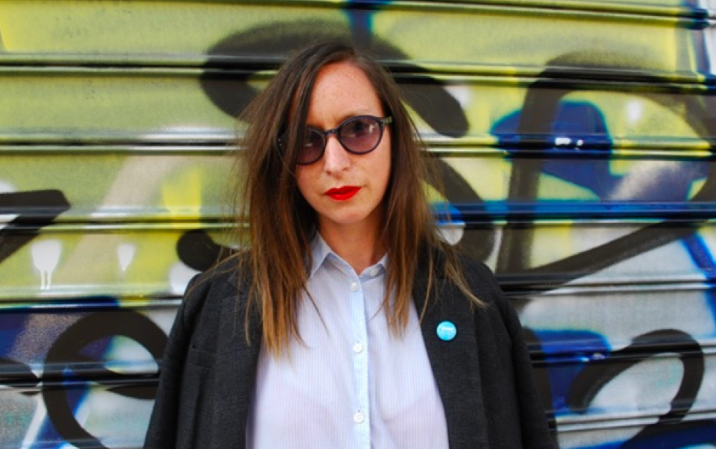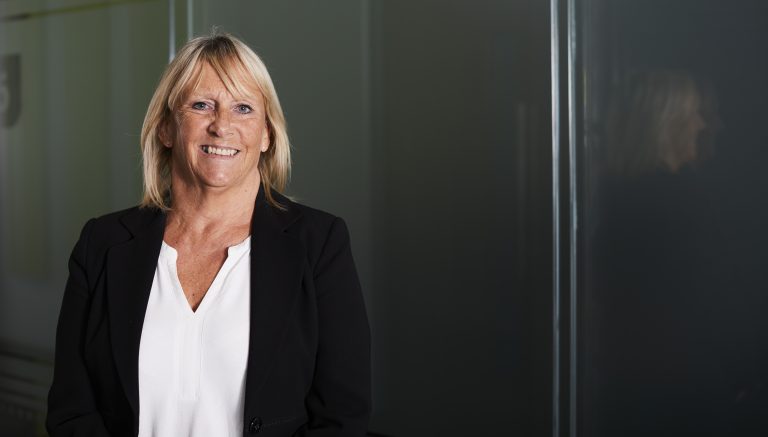WEDDING SUPERSTITIONS
There are critical times in many people’s lives such as birth, marriage and death – or, as we say in Hull, “Hatched, Matched and Dispatched”. Superstitions are drawn to these key life events like bees to a honeypot.
In this summer issue of Hull Hub, therefore, I would like to highlight the variety of folklore beliefs and traditions surrounding weddings and the honeymoon. The bride is more central then the groom – so let’s start with her and then trip our way through the many taboos in the ceremony.
BRIDE:
The word ‘Bride’ is from St.Bridget. She is the Christian version of the Pagan Irish and Ancient British Goddess of Fertility called Brid. She is one of three patron saints of Ireland and her special day falls in February. The man is the ‘groom’ because (some sources claim) he had to ‘groom’ the bride into becoming a wife. Other etymologies argue it is simply an Old English word for man. Talking of ancient origins, the word ‘wed’ is from the Anglo-Saxon for ‘pledge’.
WEDDING DRESS:
Practically every item of the bride’s apparel has a sacred significance. The most well-known wedding verse goes:
“Something old / Something new,
Something borrowed / Something blue.
[ – and a sixpence in her shoe]”
The set of superstitions which underlie this ditty are:
Something old can be shoes, handkerchief or her grandmother’s ring.
Something new is often a white dress for purity, innocence and simplicity. The dress must not have a bird design on it – this is a very unlucky omen.
Something borrowed usually comes from an older woman in the family who has a happy marriage – thus ensuring continuity of joyful union and family links. When Princess Elizabeth married Philip the Duke of Edinburgh in November 1947, she borrowed her mother’s diamond tiara (a common practice in Hull’s fishing community!!).
Something blue represents the sky and the colour of Heaven. Blueness equals Trueness and Happiness. The blue item is often the garter which the bride has to wear on her left leg. In Pickering (Yorkshire), after the wedding ceremony, youths race from the church porch to the bride’s home. The winner was then allowed to remove the garter from the bride’s leg. He then placed it on his own sweet-heart’s leg as a love charm against unfaithfulness. Still with the wedding dress, we next see the influence of colour magic.
Another wedding ditty – a fairly long one this time – goes:
Married in white, you have chosen right.
Married in green, ashamed to be seen.
Married in grey, you’ll go far away.
Married in red, you’ll wish yourself dead.
Married in blue, your love will be true.
Married in yellow, you’re ashamed of your fellow.
Married in black, you’ll wish yourself back.
Married in pink, your spirits will sink.
Married in brown, you’ll live out of town.
Married in pearl and you’ll live in a whirl.
I recently saw on the telly that it was Queen Victoria who initiated the fashion for white wedding dresses when she got married to Prince Albert on 10 February 1840. It rained heavily that morning – but that was a good omen which foretold of many children from their union. This certainly turned out to be true with nine children.
DELAYED: If a wedding is postponed for any reason, it is taken as a bad omen. A Hull superstition which mirrors this is, if a seafarer’s voyage is interrupted, then it is an ominous sign for a bad trip.
FRIDAY 13th:
This is the unluckiest date to wed and is often avoided when booking the wedding day. Hull Registry Office ceremonies drop dramatically on that date. A typical Friday has around a dozen weddings, but on Friday the Thirteenth, this drops to about two or three.
THE GROOM:
He figures very little in these bride-centred taboos. Indeed, he is excluded from seeing the bride before she arrives at the church. Even then, he must not look back over his shoulder to watch her coming down the aisle. He must resist this difficult temptation. Perhaps this is associated with the strict taboo of ‘not looking back’ – better to focus on the future ahead.
HOUSEHOLD CAT:
A single sneeze by the family feline on the wedding day is a good sign for the bride. If this rare event fails to happen, the bride will have fair weather if she feeds the cat well just before leaving for the church. Another saying goes, ‘Happy is the bride the sun shines upon’ because it is a good omen for marital joy. Is this why summer-time weddings are so popular? Then again (another contradiction coming up), wedding day rain is a sign of cleansing and fertility in the marriage – as above with Queen Victoria.
LUCKY CHARM:
The horseshoe is still a favourite lucky charm on the big day. The pre-decimal silver sixpence coin is also popular. This symbolises wealth. Whilst researching this article, I came across the “and a sixpence in her shoe” – (quoted earlier).
CHIMNEY SWEEP:
It is considered lucky for the groom to get a sooty handshake from a chimney sweep and then for the sweep to kiss the bride. This superstition has been linked to King George II in the 1700s and Princess Elizabeth in 1947 – but I will save those stories if ever I get around to writing about Royal superstitions.
BRIDESMAIDS:
They play a vital part at the ceremony, whether they know it or not. The saying is, “Three times a bridesmaid, never a bride”. Their role is to protect the bride from evil forces. Therefore, if a maid is exposed three times to the harmful spirits, then she will not herself be pure to marry. Unless, that is, she goes on to perform this service for a total of seven times – then she is safe to marry! I am not sure of the logic here! Superstitions operate in mysterious ways.
WEDDING VEIL:
Similarly, the veil acts as a protection from evil spirits until the bride is safely married and under the protection of her husband. She is vulnerable because this is a critical ‘in-between time’. That is, between maidenhood and womanhood, virgin and wife.
BRIDE’S GUESTS:
Her family and friends must sit on the left-hand side of the church. In the realm of superstition, left is associated with women. That obviously means the groom’s folk sit on the right. This is primarily a Christian tradition. Watch out for church doorways – the female statue is on the left (see photo taken at Hull Minster).
BRIDE’S FATHER:
This is not a superstition, but an ancient tradition, in that the father gives his daughter over to her husband. This stems from the patriarchal days when women were ‘objects’ to be handed from one man to another – like ‘goods and chattels’. Her father makes the first speech at the wedding reception.
BEST MAN and GROOMSMEN:
The best man is usually a close friend of the groom and is there to attend his needs – look after the ring and perhaps tell mucky jokes during his speech. Groomsmen are a relic of the time when enemies might attack a wedding to carry off the bride. It was the groomsmen’s duty to guard against such uninvited guests.
TEARS:
The bride must shed a little tear to ensure a happy marriage, especially as the groom raises the veil to give her the first kiss as her husband. It is also a good omen if a baby cries during the ceremony.
RING FINGER:
The wedding ring, an unbroken circle, is symbolic of endless love. If she has to help him place the ring on her finger, then she will be the boss in the marriage. In UK/USA the ring is worn on the third finger of the left hand. One belief is that an artery runs from that finger directly to the heart – ensuring love. In Europe, however, it is the right hand – do they have a different biology across the Channel?
MAIDEN NAME:
“To change the name, but not the letter / Is to marry for worse, and not for better”. This applies, for example, if a Miss Jones married a Mr Jarvis.
CONFETTI:
The word ‘confetti’ sounds Italian and is their word for sweetmeats. That is where we get our English word ‘confectionery’. Originally, wheat, rice, grains, salt or petals were thrown on any important occasion for good luck. For example, over a new ship when launched; when King Henry VII got married in 1486; and at weddings even in Roman times. As far as a wedding is concerned, throwing seeds, is to wish the happy couple prosperity and fertility in their future together.
I remember an old Bob Hope joke: “I didn’t mind our guests throwing rice at my wedding – I only wish they had not boiled it beforehand”.
TOSSING THE BOUQUET:
In olden times, women who envied the bride used to tear pieces off her wedding dress to keep for good luck. To prevent them doing this, she tossed her bouquet of flowers to divert them from ripping at her clothing – it has since become a tradition. Prior to flowers, a bride carried ears of corn (as a symbol of fruitfulness). The bridesmaid or woman who catches the bouquet will be the next to wed.
WEDDING GUESTS:
They must leave the reception by the same door they entered – otherwise, it would result in bad luck. This superstition is like when visitors calling to a house and must leave by the same door they entered.
WEDDING GIFTS:
In essence, wedding gifts symbolise fertility and abundance – and help the newly-weds set up home together. Originally bread and salt were brought along. German brides were given nuts – thus the phrase ‘go nutting’.
Gifts to be avoided for superstitious reasons include anything sharp – especially knives. It is believed they will cut the couple asunder. This is a global taboo and one Japanese knife manufacturer gets around this problem by including a tiny five yen coin with each knife sold. Then the recipient can hand the coin back to the giver – thus making the gift into a financial transaction and the relationship is not cut.
Mirrors are also a no-no gift because, if broken, that will result in seven years bad luck for the pair. Added to that, a mirror might encourage vanity in anyone looking at their own image.
Actually, the other day I was looking at myself in the mirror and someone told me: “Alec are you just infatuated with yourself”. I denied it, of course and replied, “No, that is not true – with me, it’s the real thing”.
WEDDING CAKE:
In Anglo-Saxon times, it was the wedding guests who brought along cakes to the occasion. These were stacked one above the other and thus started the idea of a tiered wedding cake. The bride must make the first incision and utter a silent wish at the same time. If young ladies at the wedding want to dream that night about the man they will themselves marry, they sleep with a piece of the cake under their pillow. The married couple keep some wedding cake for the first christening.
SHOES, SLIPPERS and BOOTS:
Footwear is sometimes tied behind the honeymoon carriage and are symbolic of the womb and fertility. Remember the nursery rhyme: ‘There was an Old Woman who lived in a Shoe’ – it is all about having lots of children. Nowadays, tins cans and ‘Just Married’ signs are attached to the rear bumper of the couples’ car.
HONEYMOON:
This word is from the Teutonic custom whereby the wedding was celebrated for 30 days (which takes its name from the monthly cycle) after the wedding by drinking mead made from honey. Bavarian brides sometimes give their new husband a tiny compass so that he will never stray from the path of true love.
THRESHOLD:
Traditionally, the groom carries his bride over the threshold. In Roman times this was to show that she lost her virginity unwillingly. Nowadays, whoever is the first to set foot in the new home will rule within the marriage. Thus, if the man carries the bride, this ensures he will be the one to first-foot. But is it true? Did any ladies out there get carried over the threshold? Who rules the marriage in your household?
CONCLUSION:
It is said that “a young bride and groom spend most of their time looking into each other’s’ eyes but, as their love strengthens and they grow older and happier together, then they both look ahead in the same direction”.
There was a study recently that suggested couples are getting married later in life and this reduces the chances of the pair getting divorced. It is assumed that they will not have dashed into the wedding in haste. Some readers might know that Hull poet Audrey Dunne and I got married only last year – after being together for over three decades. One might joke that in our case, the “something old” was the happy couple and “something new” the love we share everyday thereafter….



